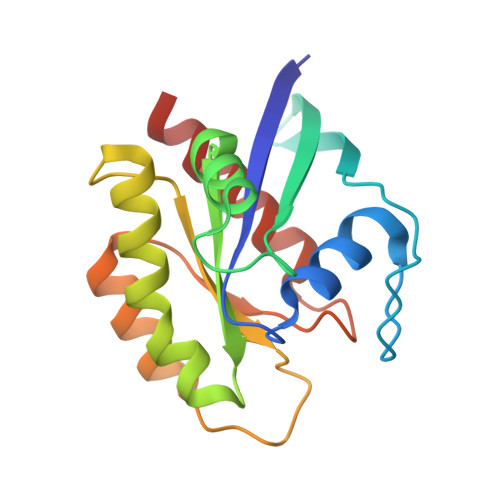KRAS G12C fragment screening renders new binding pockets.
Mathieu, M., Steier, V., Fassy, F., Delorme, C., Papin, D., Genet, B., Duffieux, F., Bertrand, T., Delarbre, L., Le-Borgne, H., Parent, A., Didier, P., Marquette, J.P., Lowinski, M., Houtmann, J., Lamberton, A., Debussche, L., Alexey, R.(2022) Small GTPases 13: 225-238
- PubMed: 34558391
- DOI: https://doi.org/10.1080/21541248.2021.1979360
- Primary Citation of Related Structures:
7A1W, 7A1X, 7A1Y, 7A47 - PubMed Abstract:
KRAS genes belong to the most frequently mutated family of oncogenes in cancer. The G12C mutation, found in a third of lung, half of colorectal and pancreatic cancer cases, is believed to be responsible for a substantial number of cancer deaths. For 30 years, KRAS has been the subject of extensive drug-targeting efforts aimed at targeting KRAS protein itself, but also its post-translational modifications, membrane localization, protein-protein interactions and downstream signalling pathways. So far, most KRAS targeting strategies have failed, and there are no KRAS-specific drugs available. However, clinical candidates targeting the KRAS G12C protein have recently been developed. MRTX849 and recently approved Sotorasib are covalent binders targeting the mutated cysteine 12, occupying Switch II pocket.Herein, we describe two fragment screening drug discovery campaigns that led to the identification of binding pockets on the KRAS G12C surface that have not previously been described. One screen focused on non-covalent binders to KRAS G12C, the other on covalent binders.
Organizational Affiliation:
Integrated Drug Discovery, Quai Jules Guesde, Vitry Sur Seine Cedex, France.
















